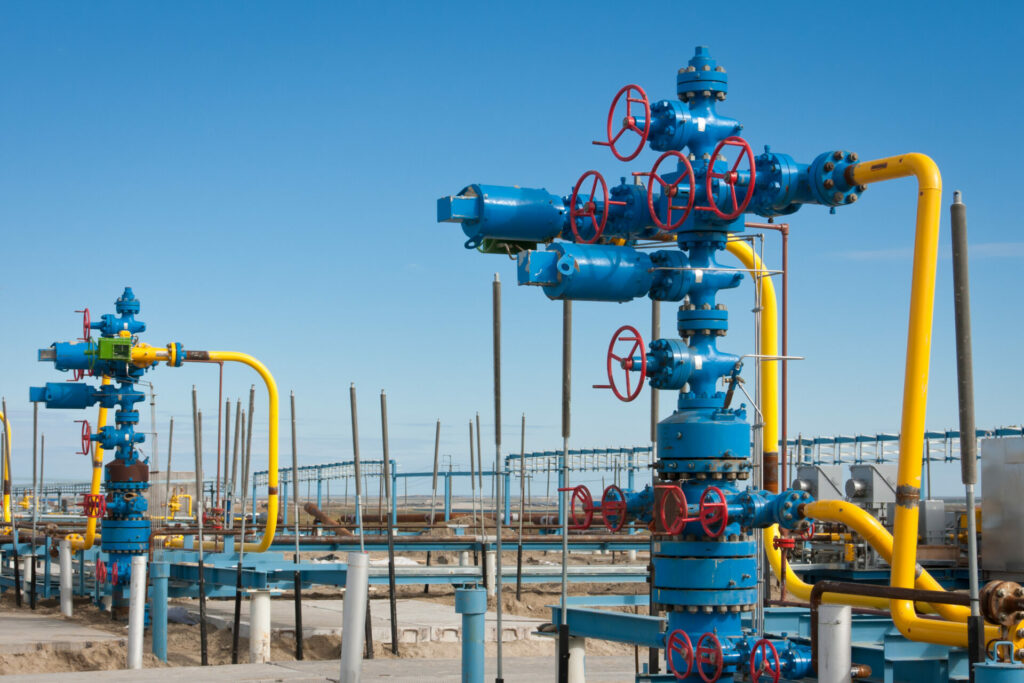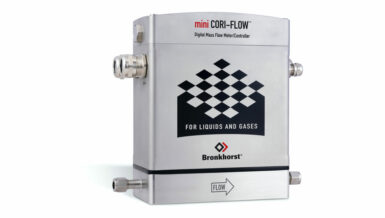To measure the gas flow from their gas wells, the gas company required the measurement to take place as close to the wellhead as possible. The major challenge with such as requirement is that high noise levels close to the well interfere with a flow meter’s electronics, so choosing a device that could cope with such conditions was vital.
Background
Drilling for gas requires a wellhead made up of valves, fittings, piping, gauges, and flanges as well as control equipment such as outlets, blowout preventers, casing heads, tubing heads and a Christmas tree that allows controlled access to the well. The Christmas tree is used to inject the chemicals and fluids necessary to extract the gas and to direct it to the appropriate location.
Since pressure at the wellhead is usually extremely high, a choke valve is typically used to control the flow rate of the natural gas to as little as half the maximum flow rate of the well. Most choke valves operate by lifting up and down a solid cylinder placed around or inside another cylinder covered with numerous holes. Through these holes, the gas enters the cylinder from all directions, collides in the center and concentrates into one straight flow. This makes it much easier to control the gas flow.
When measuring the flow of gas coming out of the well through the wellhead, the closer the measurement point is to the wellhead the better. The reason is that construction practices within the gas industry require a minimal amount of pipe to be exposed above the ground. This will minimize the risk of damaging the pipe considerably.
The problem
What made this application so challenging was the requirement to locate the flow meter near the wellhead where the noise generated by the gas flowing out of the well is at its highest. This would allow maximized control of the well through accurate measurement of the natural gas.
To obtain this, the gas company required the distance between the location of the flow meter and choke valve to be absolutely minimal. Installing a flow meter at such a location would put tremendous stress on any equipment, but in this particular
application, three key elements made measuring the gas stream even more challenging:
- Extremely high flow velocities
- Large amounts of impurities such as sand and water mixed in with the gas
- Excessive valve noise
The main challenge was considered to be the valve noise: when the gas with the high sand and water content passes through the choke valve it erodes the valve, generating a lot of noise. Over time this noise level increases as the valve closes tighter to compensate for the erosion caused by the sand. The tighter closure is required to maintain a steady flow rate from the well.
Most ultrasonic flow meters, however, don’t work well in noisy environments. Since they rely on ultrasonic signals to measure
the flow they are very susceptible to high noise levels, causing the signals to simply “disappear”. So, installing a flow meter in such an environment constitutes a major challenge.
The solution
Given these circumstances, the gas company only had two choices: they could either locate the measurement point far enough downstream of the choke valve (180 to 200 pipe diameters) to allow the noise generated by the choke valve to attenuate. Alternatively, they could find a meter able to handle the noise.
The first approach would expose a large amount of pipe above ground, which was considered far from being ideal from both a construction and safety standpoint. It would increase the risk of damage to the exposed part of the pipe and therefore, it was not considered an option.

Instead, the gas company involved Siemens in the selection process. A company representative suggested a solution after having spent less than half a day analyzing the site characteristics: the clamp-on ultrasonic SITRANS FS230 flow meter dedicated for gas measurement. One of the major advantages of this meter is its capability of maintaining operation over a very wide flow range. More importantly, however, it could easily be mounted 20 pipe diameters downstream of the choke valve and it could be done in only two hours. Although the initial test with a standard gas meter was successful, it was determined that improved performance could be attained by tuning the input module. This increased the meter’s immunity to the choke valve noise considerably.
After the installation was complete, the clamp-on meter ran with no operator intervention, providing accurate readings over the total flow range of the well. Additionally, the meter was proven repeatable to 0.05% when the well conditions were duplicated. The gas company was thoroughly convinced that Siemens had the superior solution and recommended the SITRANS FS230 ultrasonic gas flow meter as the solution for their measurement problem and the meter of choice for other gas measurement applications.































